Stain selection plays a defining role in the visual outcome of both interior and exterior cement surfaces. Its impact is permanent and depends on both the surface and application method. This guide explores how different concrete stain colors behave in real-world projects across locations, slab types, and finish schedules.
How Translucent Stains Interact with Concrete
Stain systems interact with the slab’s surface texture, finishing method, and mix composition. They expose trowel marks, patch transitions, and aggregate rather than obscure them. As a result, each application reflects differences in cement content, curing behavior, and prep technique. These factors affect how concrete stain colors take to the slab and must be considered during product selection.
A Color Palette That Aligns with Material and Design Goals
Stain results depend on the type of pigment, the tone selected, and how the finish interacts with site conditions. This curated collection of concrete stain colors was developed to deliver consistent appearance and dependable behavior across a wide range of slab types.
Neutrals and Earth Tones for Visual Balance
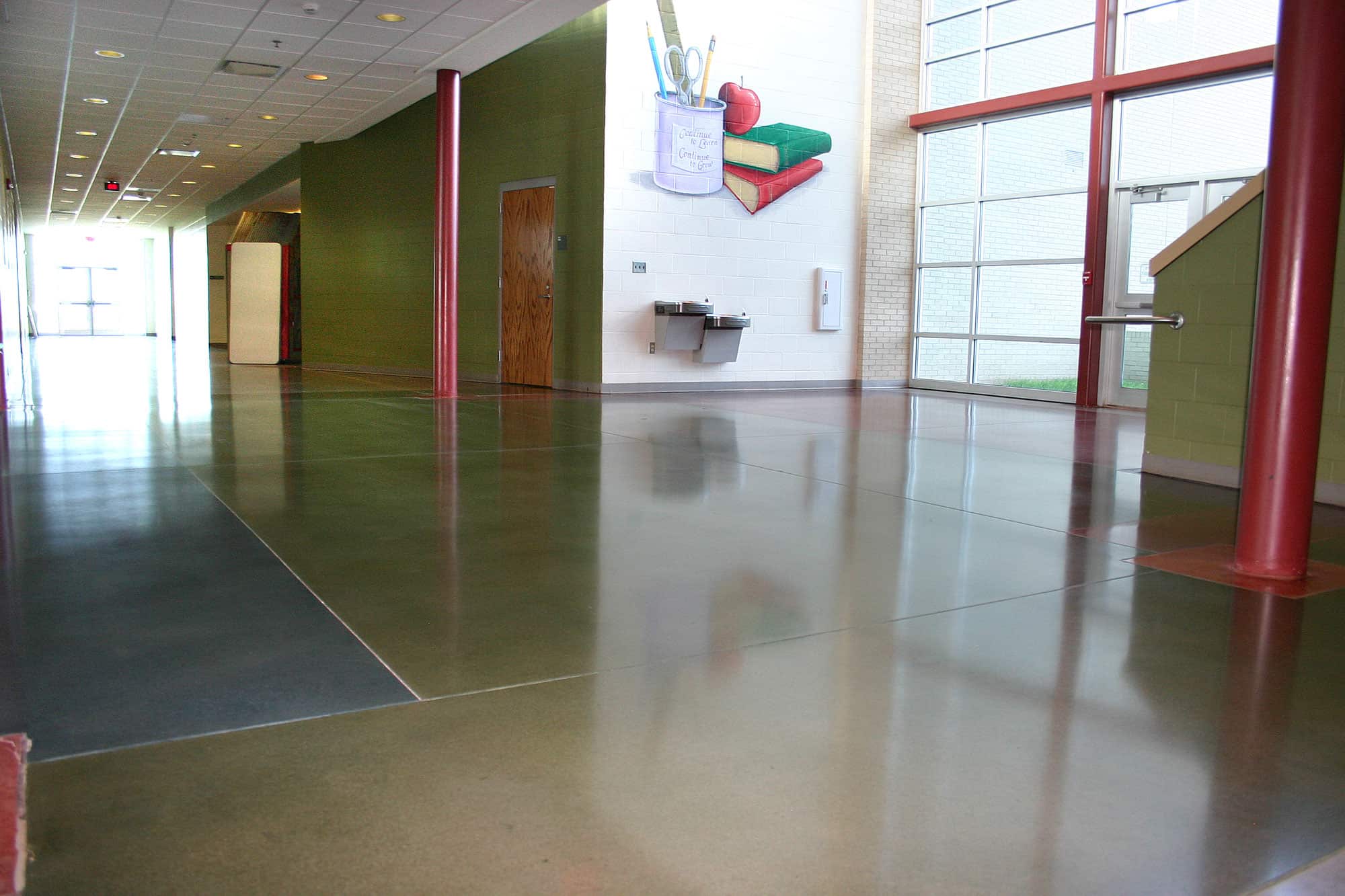
Buff, Camel, and Fawn create soft, neutral tones that coordinate with wood siding, stone finishes, and warm cladding. These colors reduce visual competition and help focus attention on fixed architectural elements. On active slabs, they also reduce the visibility of dust and light wear.
Deep Shades that Ground a Slab
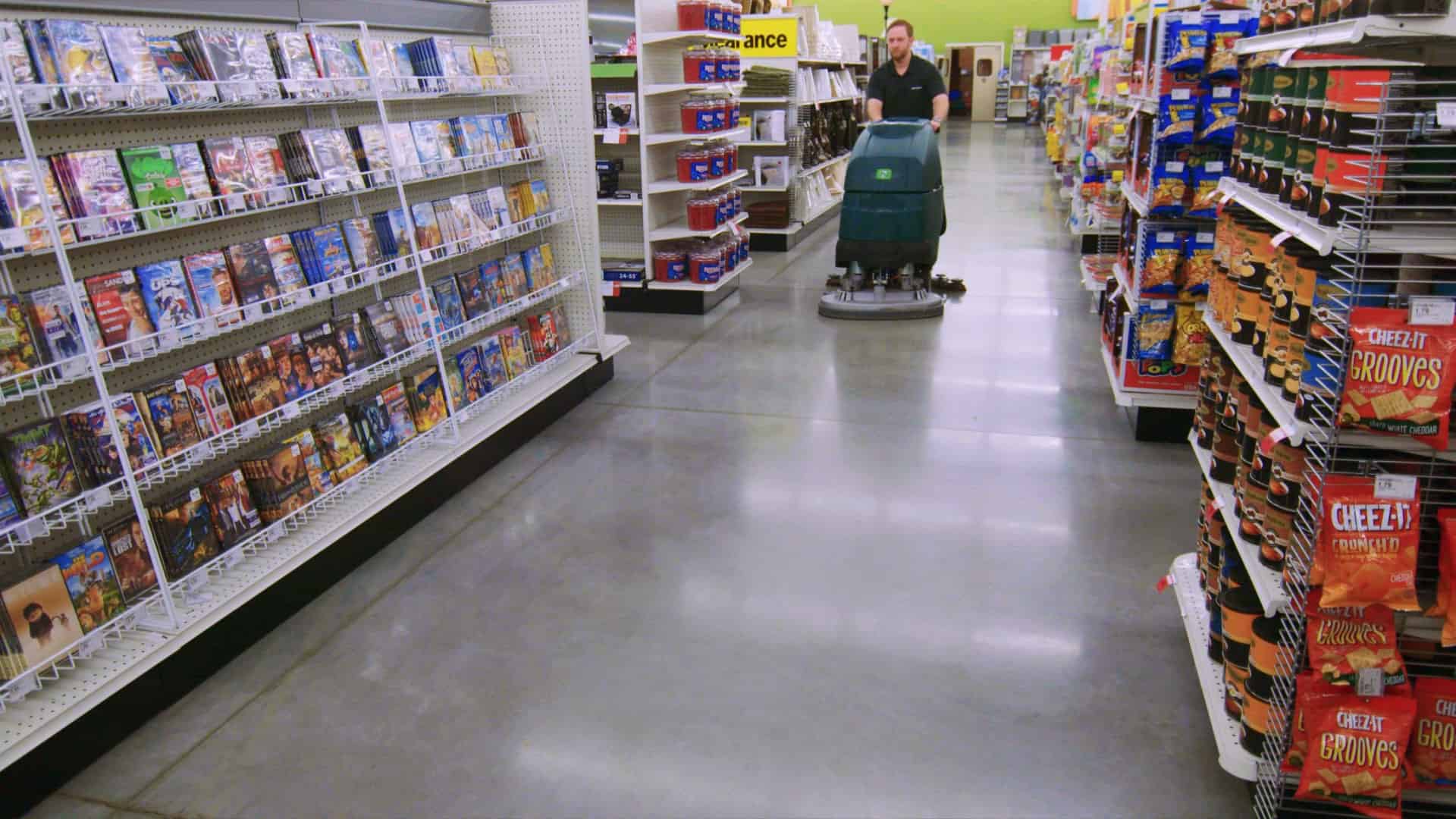
Onyx, Iron, and Black Orchid create deep contrast that intensifies under polished finishes. These colors draw attention to perimeter cuts, scored lines, and layout divisions. Any flaw in the surface will be visible under light, which means the slab must be finished evenly before stain is applied.
Warm Red Tones for Interior Impact
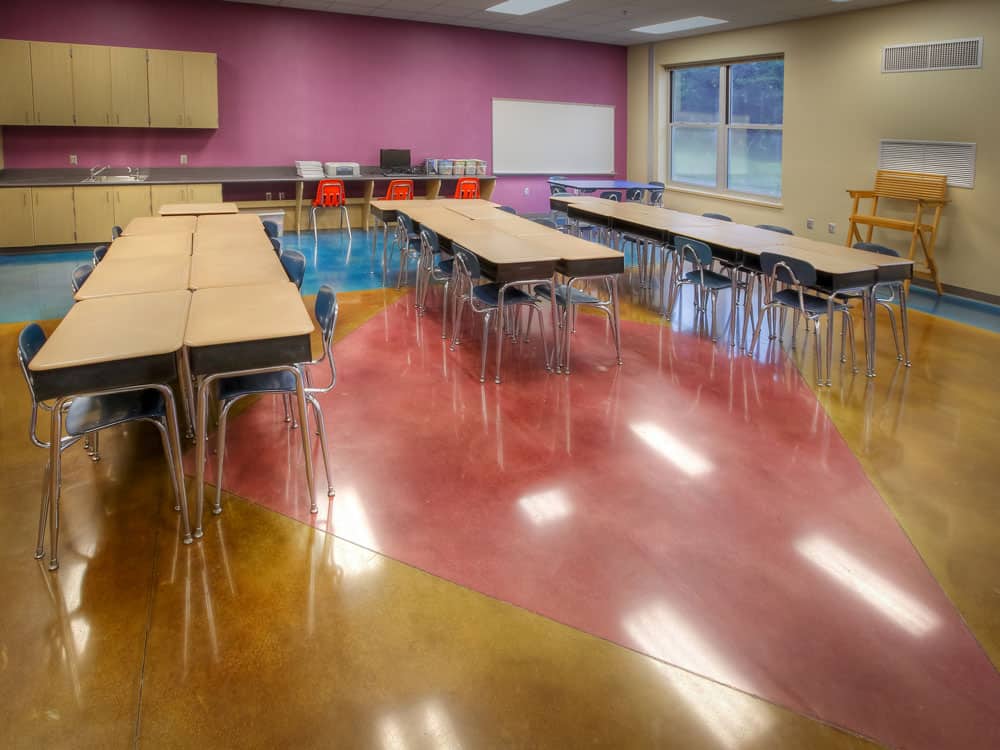
Red Rock, Ruby Red, and Rose Quartz bring warmth and visual energy to interior concrete surfaces. These shades enhance surface grain and texture while adding depth and dimension under indoor lighting. They're often selected to create bold circulation zones, guide movement through open spaces, or establish strong focal points in lobbies and corridors.
When layered, these tones create natural variation that draws the eye without overwhelming surrounding finishes like steel, glass, or exposed concrete. Their rich color can also mimic the aesthetic of clay tile or masonry — ideal for designers seeking a warm, grounded palette in modern or industrial interiors.
Cool Tones for Design Contrast

Sapphire, Blue Steel, and Green Leaf create sharp tonal contrast suited to high-visibility interiors. Their appearance can shift slightly throughout the day as lighting conditions change, especially in spaces with large glass exposure or skylights. These colors help define circulation paths or highlight branded areas in retail and hospitality settings.
Mid-Range Browns and Clays
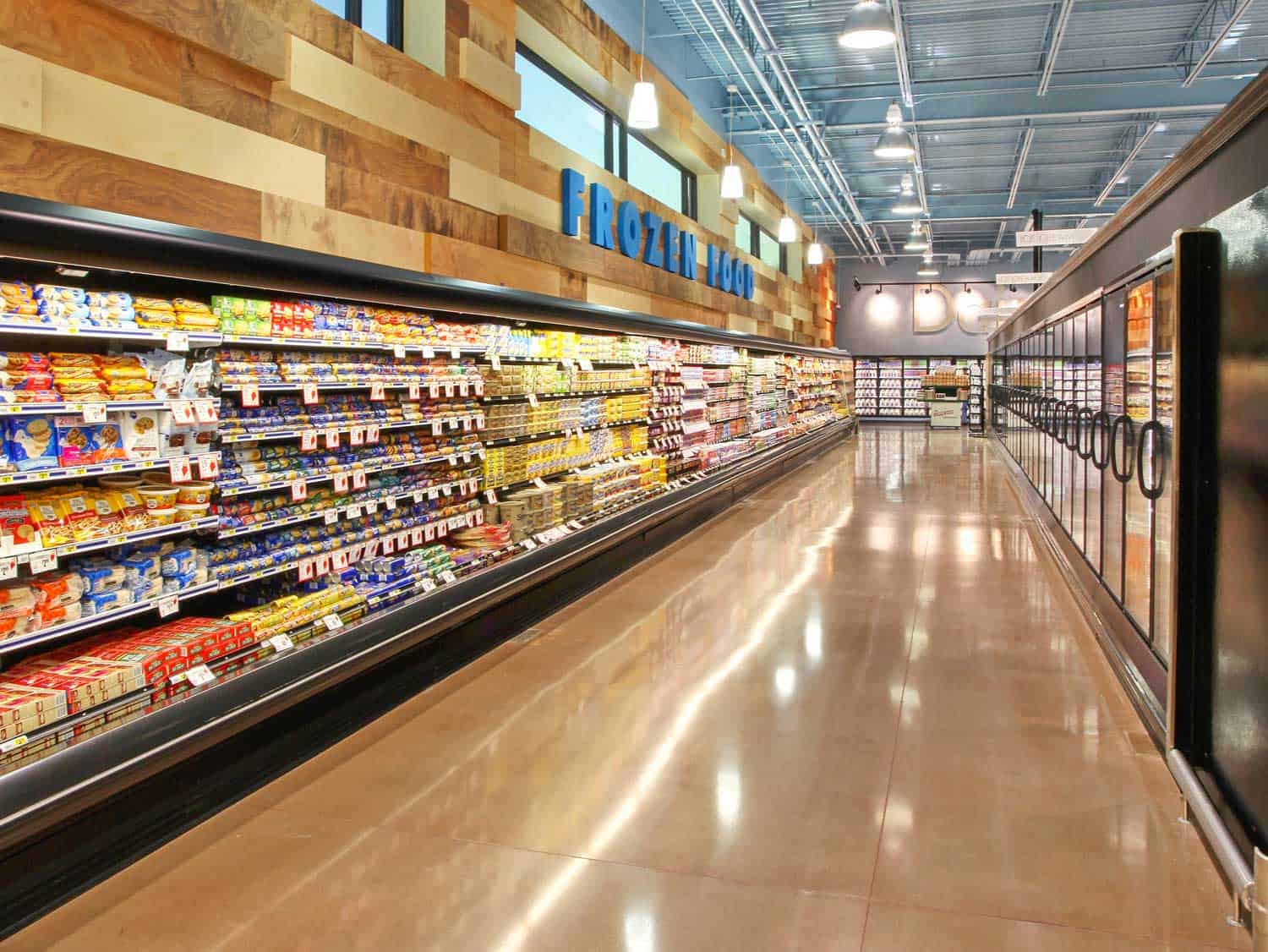
Earth, Clay, Adobe, and Taupe form a stable tone group that mimics natural building materials. These hues work well with sandstone, light wood, and tile-heavy interiors. When used across multiple slabs, they create continuity without visual repetition.
Application Outcomes Depend on Surface and Method
Concrete stain colors behave differently in the field based on finish type, dilution method, and drying conditions. Every stain reacts differently on burnished, broomed, or power-troweled surfaces. Color intensity increases with porosity and decreases with overworked or prematurely densified slabs.
Slab Density and Moisture Retention
A stain applied too late on a hardened or sealed slab will not absorb evenly. Uneven absorption causes visible blotching or light patches. In some cases, an overly dense finish will reflect pigment rather than bind it.
Testing and Sample Panels
Crews must build test panels using the same tools, timing, and finish schedule planned for the main slab. These panels establish absorption behavior and determine the final stain appearance. A stain labeled charcoal may lean blue or brown depending on surface conditions and ambient light.
Indoor vs Outdoor Considerations for Color Selection
Environmental exposure and use conditions determine which colors work best for a given project. UV exposure, temperature swings, and surface contaminants all affect appearance and long-term durability.
Indoor Applications with Variable Gloss Levels
Polished interior floors reveal more layering depth and concrete stain colors than textured slabs. In open-plan interiors, crews use stain layout to define walkways, work zones, or visual separation between functional areas. Lighter colors may require more maintenance in high-use areas where dust collects near entry points.
Exterior Use and Protective Coatings
Exterior slabs need breathable sealers that allow moisture vapor to escape. Without this, slab cracking or sealer failure can occur during freeze-thaw cycles. Sealers and recoat schedules maintain color stability when matched to local freeze cycles, sunlight levels, and surface moisture exposure.
How Stain Color Relates to System Performance
Stain color must align with slab prep, densifier timing, and final finish. Each product in the sequence—color hardener, densifier, and sealer—affects how the slab looks and performs. Skipping a step or applying out of order can reduce depth, durability, or consistency.
Staining Sequence in Polished Slab Systems
Stains must be applied before the densifier to ensure proper absorption. If the stain is added after hardening begins, it won’t penetrate as deeply, and the final color may appear flat or uneven. When applied in the correct order, the pigment bonds within the surface and gains visual depth as polishing exposes the color embedded in the slab.
Densification and Final Gloss
Lithium silicate densifiers bond pigment into the slab surface and raise abrasion resistance under foot traffic. In commercial interiors, they also reduce dusting caused by fine surface wear. After densifier cures, crews can adjust gloss levels through burnishing and pad selection to meet visual or slip-resistance goals.
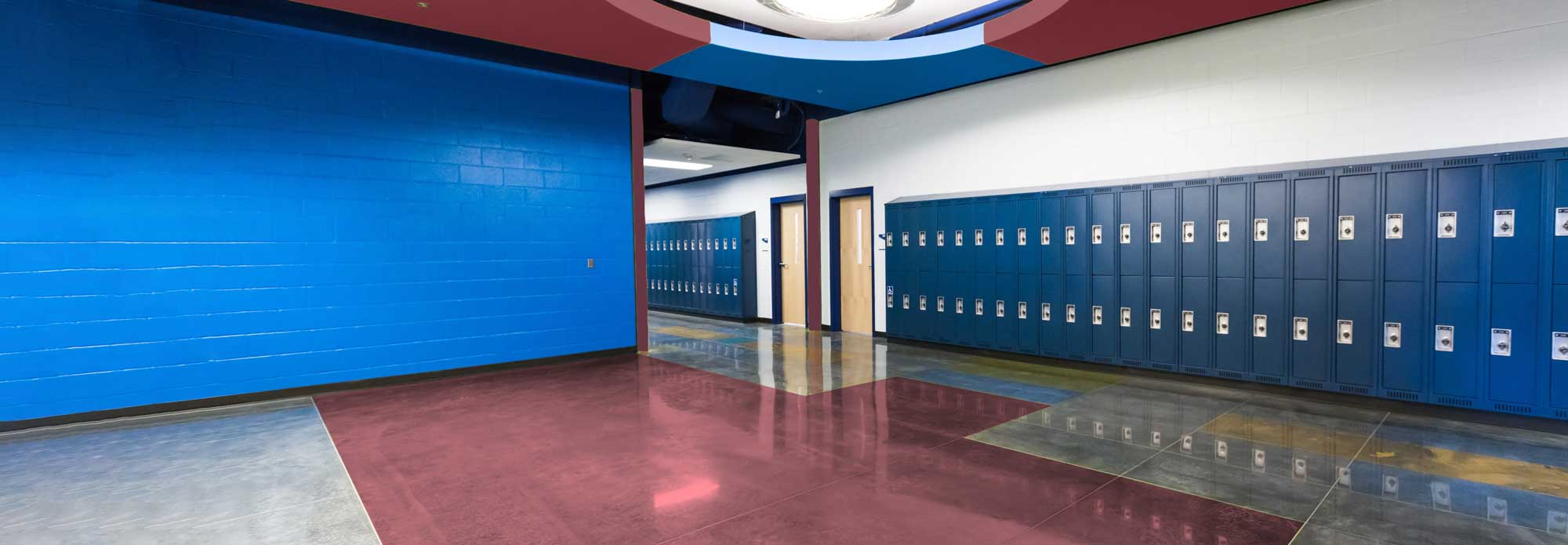
Field-Tested Sealers and Densifiers That Complete the Stain System
The following products from PROSOCO complete the stain-to-seal performance cycle discussed above. Each one is designed for compatibility with field-applied stain systems on concrete slabs.
- Consolideck® LS – A lithium-silicate densifier used to harden concrete and lock in color. Ideal for high-traffic polished slabs.
- Consolideck® LSGuard – A breathable protective sealer that enhances color depth and reflectivity. Suitable for interior or exterior concrete finishes.
Together, these products help ensure that concrete stain colors perform consistently across changing field conditions.
Explore Decorative Stain Systems from Prosoco
We offer complete stain and densifier systems engineered for consistent field performance. Our 16-color palette delivers tested outcomes across polished, sealed, and exposed finishes. Contact us today for more information.